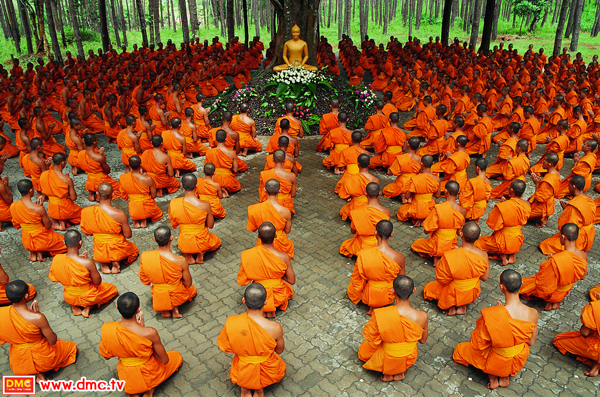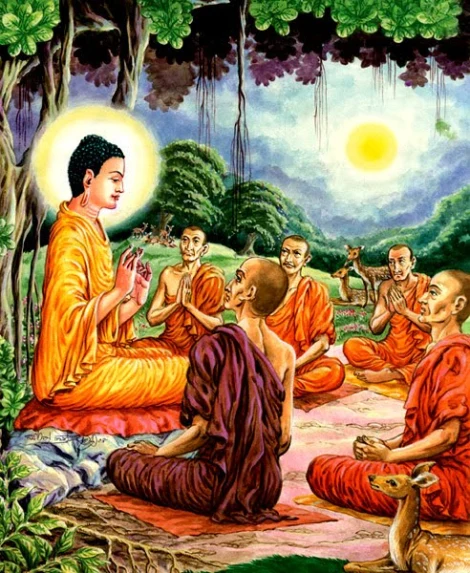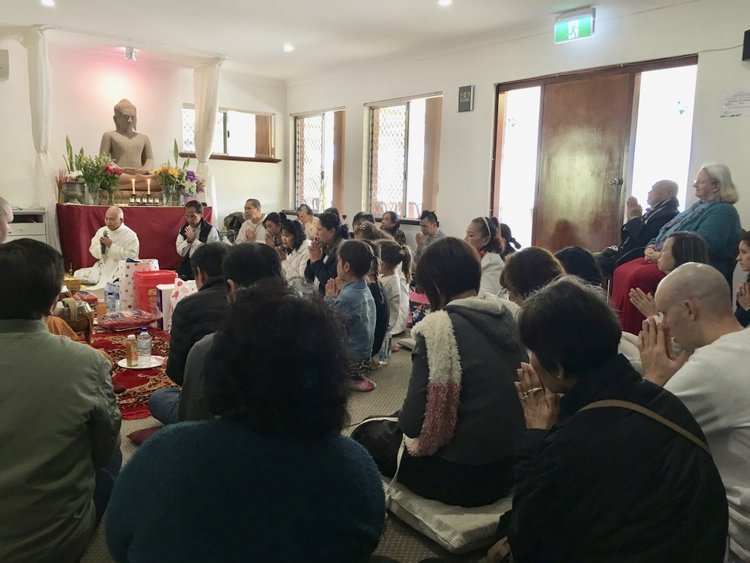
Buddhists around the world celebrated the beginning of the three-month rains retreat (Vassavasa) on 13 July.
The three-month rains retreat for monks and nuns begins on the day after the full moon of the eighth lunar month, and is one of the most important festivals in the Theravada Buddhist calendar. The retreat continues until the full moon of the 11th lunar month, which this year falls on 9 October.
According to Buddhist lore, it was on this day that the historical Buddha, Shakyamuni, famously gave his first teaching at Sarnath after attaining enlightenment. The Buddha gave his first discourse on the Middle Way to five ascetics, former companions during his search for wisdom, who became his first disciples.
“It’s a day that is supposed to commemorate the first sermon preached by the Buddha after he became awakened,” said Dr. Stephen C. Berkwitz, department head of religious studies at Missouri State University. “Because of that, it’s also colloquially called Dharma Day, the day of the Buddha’s teaching. It certainly has special resonance with the exposition of what the Buddha discovered and then taught to his followers. It’s a significant day in the Buddhist calendar.” (Woman’s Day)
During the rains retreat, monastics remain within their monasteries and temple grounds, devoting their time to meditation and study. During India’s rainy season, living outside was traditionally difficult and potentially dangerous, so in the past groups of monks would form temporary communities for the duration of the season. This also meant that they could avoid unintentionally harming crops, insects, and other creatures that come out and flourished during the rains.

While all monks and nuns are expected to observe the rains retreat, dispensation of up to seven days can be granted under certain circumstances, such as attending to sangha business, giving a Dhamma teaching, or visiting a sick relative.
In the present day, the rains-retreat practice is not limited to the monastic sangha; lay Buddhists can also be found observing the period in Bangladesh, Myanmar, Sri Lanka, Thailand, and elsewhere. During rains retreat, lay followers undertake to observe certain vows and the eight precepts rigorously, engaging in activities such as providing alms to monastics, giving up smoking and intoxicants, practicing meditation, chanting Buddhist suttas, and listening to Dhamma talks.
The end of the rains retreat is marked by the Pavarana ceremony, during which monastic members have an opportunity to admonish one another for any misdeeds during the retreat. This is followed by the Kathina or robe-offering festival, which continues for a further month.
Rains retreat and Pavarana are the most significant religious festivals in Thailand. Both are national holidays, during which it is against the law to sell alcoholic beverages. Bars and entertainment places are therefore closed.

Read more
History of the rain retreat (dmc.tv)
Religious holidays bring two alcohol ban days (The Phuket News)
Everything to know about the Buddhist Holiday Asalha Puja and what it celebrates (Woman’s Day)
Related news reports from BDG
Introducing the Buddhist Retreat Center Arya Tara, Madrid
UK Charity to Turn Former Home of Poet Wordsworth into a Buddhist Retreat Center
Clarity, Compassion, and Courage: Buddhist Global Relief Announces New Year Retreat Schedule
Related features from BDG
Touching the Earth: An Ecodharma Retreat
Pavarana: Marking the End of the Rains Retreat
The Khao Phansa Festival: The “Buddhist Lent” of Thailand
The Joy of Renunciation – In Retreat and in Everyday Life












